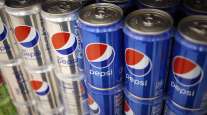Shippers, Private Fleets Aim for Sustainability

[Stay on top of transportation news: Get TTNews in your inbox.]
LAS VEGAS — Despite higher costs, some large shippers and carriers continue to invest in alternative fuels and zero-emission transportation to meet their corporate sustainability objectives in the years and decades ahead.
The furniture retailer Ikea, for example, does not operate its own fleet but has committed to shipping its goods using only zero-emission trucks and ocean vessels by 2040. In the nearer term, the company aims to reduce its transportation emissions 70% by 2030 compared with 2017 levels.
“Where we are heading is a clean and fair transport flow,” Elisabeth Fauvelle Munck af Rosenschöld, Ikea’s global sustainability manager, said during a May 20 panel discussion at the Advanced Clean Transportation Expo.
The company’s aggressive sustainability goals are driven in part by its customers.
“Our customers expect us to be a responsible company,” Munck af Rosenschöld said. “They expect that our products are sustainably manufactured with the right materials, and of course transportation is also a part of this.”
She described Ikea’s sustainability strategy as “reduce, replace, rethink,” which includes reducing energy consumption, improving efficiency through mode selection and utilizing new technologies.
Meanwhile, food service distributor Sysco Corp. has set out to reduce emissions by 27.5% by 2030. Sysco’s private fleet operates about 9,500 Class 8 tractors and 2,000 box trucks in the United States.

Dan Purefoy says 80% of Sysco’s fleet in California is fueled with hydrotreated vegetable oils. (Seth Clevenger/Transport Topics)
As of May, the company had deployed about 120 electric vehicles worldwide — mostly electric Class 8 tractors in the U.S., said Dan Purefoy, Sysco’s chief supply chain officer.
PepsiCo Foods North America plans to reduce its carbon footprint 75% by 2030 and reach net zero emissions by 2040.
“When you look at emissions from our internal fleet, transportation accounts for nearly 20% of our entire emissions inventory,” said David Allen, vice president and chief sustainability officer for the company. “There is work to do with our own fleet as well as with our carriers.”
PepsiCo has “leaned really heavily” on alternative fuel solutions and electrification as well as creative partnerships with carriers to accelerate decarbonization, Allen explained.
In Europe and North America, the company is experimenting with several business models including charging as a service and truck as a service.
“It is breaking down the barriers for carriers, in particular, for how they can accelerate those adoptions and provide service to PepsiCo,” Allen said.
As a shipper, Ikea is dependent on its transportation partners, so collaborating and co-creating solutions to increase efficiency and utilize new technologies is crucial, Munck af Rosenschöld said.
“Together we can come up with good ideas,” she said.
To help customers meet their goals, Maersk plans to decarbonize operations by 2040, said Javier Garcia Atique, regional head of customer delivery for landside transportation at the ocean shipping giant.

Javier Garcia Atique (left) and David Allen. (Seth Clevenger/Transport Topics)
In July 2023, Maersk received the world’s first green ethanol vessel and expects to add 20 more in the next three years.
“On the ground freight space, particularly in the U.S., we have deployed about 140 electric vehicles to support drayage operations,” he added.
DHL Group’s sustainability journey started 20 years ago, said Jim Monkmeyer, president of transportation for DHL Supply Chain.
The company’s network now includes 20,000 electric street scooters and 30,000 electric vehicles. It is also exploring autonomous vehicles and hydrogen.
DHL has positioned electric vehicles throughout the country to learn more about how they operate in different environments, terrain and weather.
“We’re looking at it as an investment,” Monkmeyer said. “We won’t get the money back on these trucks, but they are starting the journey for customers that want sustainable equipment.”
New technologies cost more than their diesel counterparts, but several of DHL Supply Chain’s customers have said they’re interested in contributing to the cost. They tend to be business-to-consumer shippers and government entities that have visibility to the customer.
“We’re keeping track of who has made a commitment,” Monkmeyer said.
Incentives can play an essential part in offsetting costs. Sysco tends to focus on states that provide incentives.
Sysco’s Purefoy described a range of strategies depending on the markets where vehicles operate. He explained that 80% of Sysco’s fleet in California is fueled with hydrotreated vegetable oils. Sysco would like to expand that to other markets but supply and cost are challenges.
All of Sysco’s efforts are reviewed financially.
“We do allocate dollars to this particular space, but then we have to work to show the value associated with it,” Purefoy said.
Want more news? Listen to today's daily briefing above or go here for more info
Despite added costs, Allen and Purefoy both said top-level company executives have supported sustainable solutions, with Allen saying they are among “the biggest advocates.”
Monkmeyer said DHL’s global board is incentivized to meet sustainability targets.
“That changed everything,” he said. “There is complete alignment to hit these numbers.”
However, Maersk’s Garcia Atique said solutions must be economically viable.
“We do it because it is the right thing, but everybody needs to come together and push in the same direction,” he said, adding that it takes an ecosystem of players to make things work.




